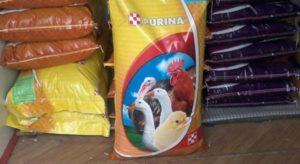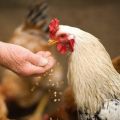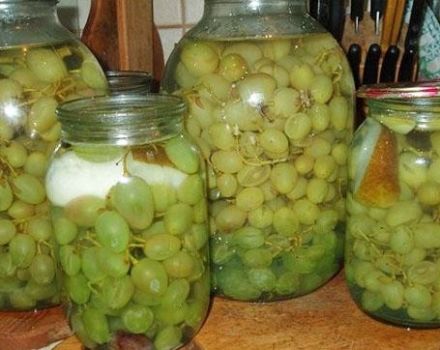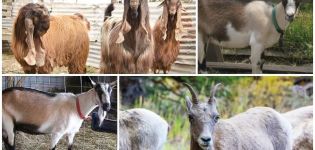Where is protein and how to properly give protein to chickens
People often wonder where chicken protein is. This component is found in many products. These include chicken eggs, meat, fish. Sprouted grains, oats, seeds and nuts are considered sources of plant proteins. To achieve normal development of chickens and ensure high productivity, it is worth choosing the right balanced diet and using the necessary supplements.
Do chickens need protein?
Protein is considered an essential element in the cells of birds. Chickens have a high demand for this element during laying. These are the substances required for the formation of egg protein..
With an insufficient amount of protein components in food or a violation of the balance of amino acids in the menu, birds stop developing and slow down their growth. Often there are problems with the formation of eggshell, feathers become hard and brittle, spermatogenesis decreases.
What foods contain protein?
Protein is found in many foods that can be used in a chicken diet.
Eggs
It is one of the most complete feeds that contains protein, vitamins and minerals. Eggs are actively used for feeding chicks. Adult chickens need this product during laying and moulting.
Every farmer has his own recipe for making egg feed. However, most often they grind it with a knife or grater, add carrots and 1 large spoonful of crackers, semolina or bran to the composition. The composition is thoroughly mixed and given to the birds.
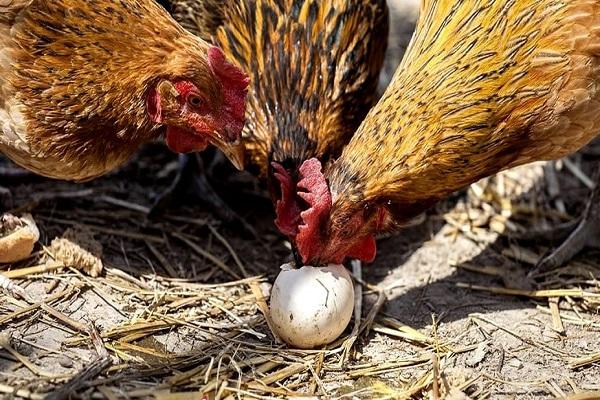
Poultry
Chicken is high in protein. The same goes for turkey. Birds are given this product boiled. In this case, the birds can be given a whole carcass. It is also permissible to give offal to chickens.
Meat
Chickens can eat beef, pork. They often eat lamb. It is also permissible for birds to give bones with meat or offal. Meat is allowed to be used raw or boiled.
The birds need meat and bone meal. It is made from the waste of meat processing plants. The composition contains a lot of protein, which contains a large amount of lysine. Also, the product contains 11% fat, 30% ash components. In addition, flour contains vitamins A and E.

Chickens are given this product no earlier than 30 days. Moreover, the volume of this component should not exceed 3%. Adult birds are given 5-7% of meat and bone meal in the feed.
Chickens are also given meat flour. It is a product that is obtained from internal organs or meat scraps.It has a higher protein content. The amount of this substance is 56-64%. In this case, the share of ash components accounts for 12-14%. The amount of fat in such flour is 18%.
The amount of meat and meat and bone meal in the bird menu is the same.
Due to the strict observance of the proportions, it is possible to achieve the full development of layers.
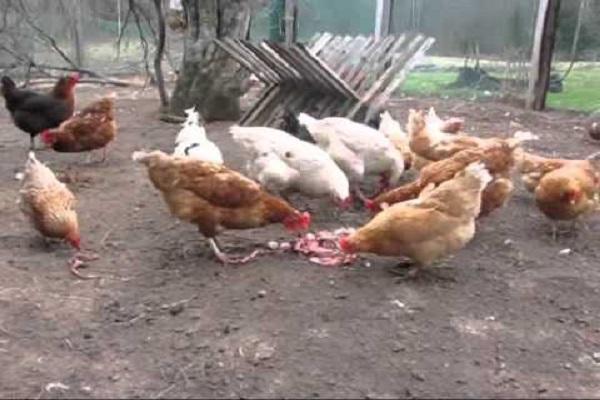
A fish
Fish can be used in any form - boiled, raw, in the form of canned food. This product is a valuable source of protein that birds need during molting. It is permissible for birds to give a whole fish. It is used with the head, bones and entrails. The birds love this product.
In the chicken menu, it is sometimes permissible to introduce fishmeal. It is considered one of the most nutritious protein foods. This flour is made from non-commercial fish and waste. It contains a lot of easily digestible protein, which includes the optimal amount of valuable amino acids. These include, first of all, lysine and methionine.
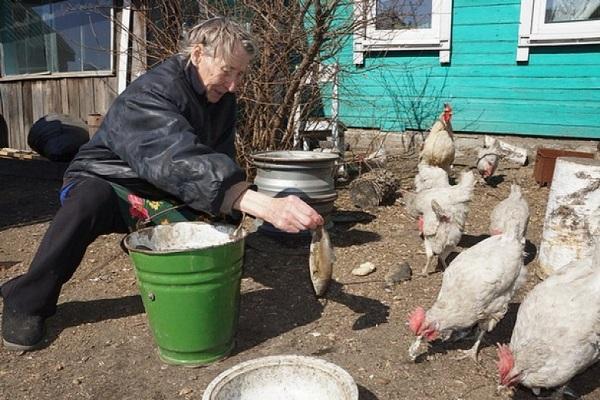
Molluscs
Layers require slow release calcium sources. This is because eggshell production occurs at night when the birds are not eating. The most valuable and reliable source of calcium release is considered to be the shells of shellfish, for example, oysters.
Mealworms
Meal worms are understood as the larvae of the large beetle. They are distinguished by a cylindrical shape and a yellow-brown tint. The worms reach 25-30 millimeters in length.
You can breed mealworms yourself. To do this, take a box and pour bran, flour, crackers or oatmeal into it. Above it is worth placing a cotton cloth, which should be moistened sometimes. Meal worms are placed in the box. They should be fed with potatoes, cabbage, beets. The birds are fed with cotton worms. They get into it for pupation.
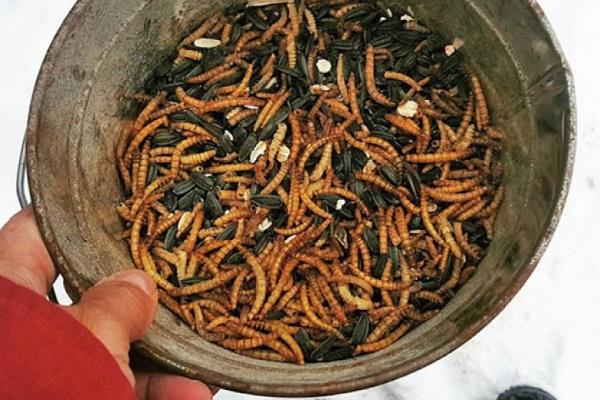
Nuts and seeds
Seeds are considered a valuable source of protein components. Sunflower or pumpkin seeds are an excellent option. Chopped nuts can be used as a treat. Almonds, peanuts are suitable for this. It is permissible to give birds and walnuts. It should be borne in mind that it is strictly forbidden to give salty foods to chickens - nuts or seeds.
It is also useful for chickens to give hemp cake. Untreated seeds contain 33% protein, while processed seeds contain 35-38%. Meals contain several times more proteins.
In the manufacture of vegetable oil from sunflower or soybean seeds, special substances are obtained - phosphatides. They contain many nutrients. The use of phosphatides in the menu increases egg production and disease resistance.
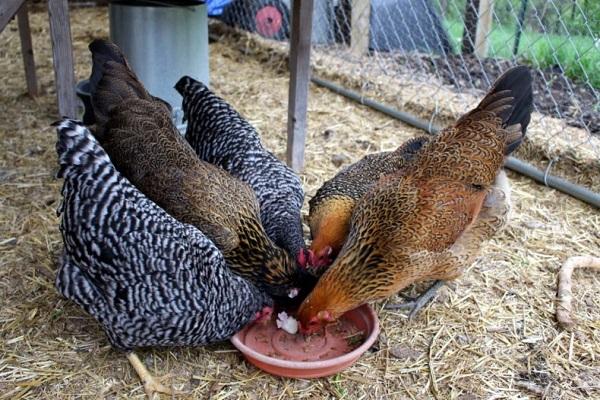
Oats
This product is given to poultry raw or cooked. Oats are a natural protein supplement. Chickens love this product. Both whole oats and cereals are beneficial.
Sprouts
Chickens like sprouted grains and legumes. These products contain a large amount of valuable protein components. Peas, lentils, beans are considered an excellent option for birds. Growing sprouts is considered an easy and reliable way to provide birds with protein.
Chicken feed
Chicks younger than 8 weeks of age have more protein in feed than for hens. Compound feed for young animals contains 17-21% protein. Moreover, food for adult chickens contains 16-17% of this component. Therefore, many poultry farmers add a little composition for chickens to the feed during moulting and egg-laying. This helps to enhance its nutritional value.
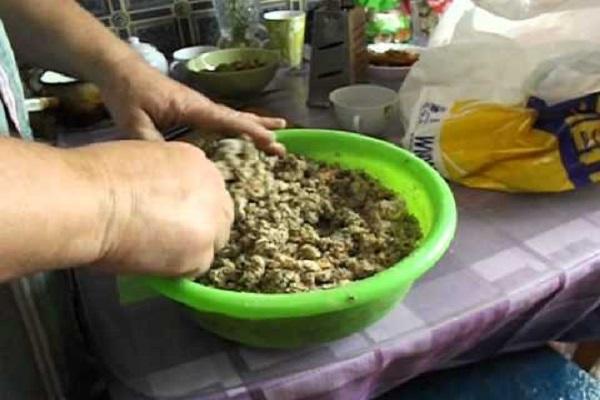
Some farmers advise giving cat food to chickens during molting, as it contains a large amount of protein components. However, this is still not recommended. Cat food is not suitable for birds. Better to get some sardines or other canned fish.
In what proportions and when is it better to give protein food?
Adult laying hens need a balanced diet.They should receive 10-15 grams of animal feed and 3-5 grams of vegetable proteins. During molting or active egg-laying, the amount of protein products may increase.
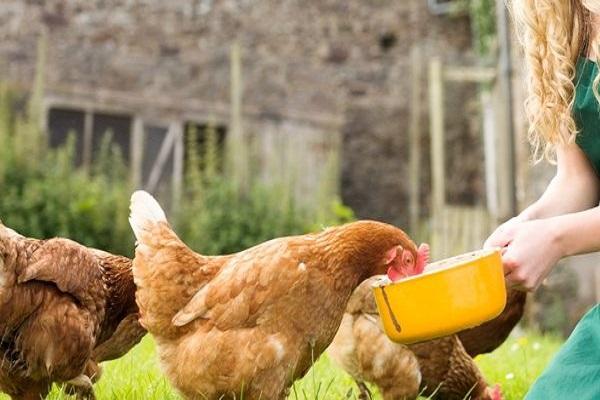
In addition, chickens need grains, herbs and vegetables. They should receive 100-120 grams of grain and 40-80 grams of greens and juicy feed per day. The introduction of mineral supplements into the diet is of no small importance. These include seashells, chalk and other elements.
Protein foods are very important for the full development of birds. Poultry are most required for proteins during molt and active egg-laying. With a deficiency of such elements, the development of chickens is disrupted, their feathers acquire a brittle and tough consistency.

